Sony may have enjoyed great success with its full-frame Alpha-branded compact system cameras, but the arrival of the A99 II shows it hasn't given up catering for pro users with its DSLR-like SLT system.
With a high-resolution, full-frame sensor on board and plenty of exciting tech alongside, Sony clearly believes that not everyone who's after a DSLR-style camera necessarily wants one of the more traditional offerings from the likes of Canon, Nikon and Pentax.
The new model adheres to the same SLT concept as the camera’s forebears, with a translucent, non-moving mirror that directs the majority of the incoming light to the imaging sensor and the remainder to an AF module.
It serves as an update to the four-year-old Sony Alpha A99, and combines the form and advantages of the SLT line with features similar to those seen inside more recent A7-series models.

These include a 42.2MP sensor, which appears to be very similar to the one inside the A7R II, together with a five-axis, sensor-based image stabilisation system – something not offered by Nikon or Canon rivals.
Normally models with such a high pixel count don’t have speed as a priority, although the A99 II defies expectations by offering 12fps burst shooting with AF and auto-exposure working throughout. Add in 4K video recording and this camera appears to be catering for many users’ needs at once.
Currently, the A99 II is likely to be considered against the likes of the Canon EOS 5D Mark IV, Nikon D810 and the Pentax K-1. And, while it’s beaten on price by the latter two – and by some margin too – it arguably offers one of the most well-rounded spec sheets we've seen.
Features
- Full-frame back-illuminated Exmor R CMOS sensor, 42.4MP
- BIONZ X processor
- 4K UHD video capture
While the original A99 made do with a 24.3MP full-frame sensor – perfectly respectable at the time of its release – the A99 II is furnished with something much more powerful. The back-illuminated Exmor R CMOS sensor has an effective pixel count of 42.4MP, and features gapless microlenses to help funnel as much light as possible into each photosite. There's no anti-aliasing filter to enable better detail retention, and Sony has primed it with an anti-reflective coating too.
As with some of Sony’s other recent sensors, the one featured here makes use of copper wiring around its rear for faster data transfer. Sony is also said to have developed a new front-end processor for the sensor to help cope with the amount of data being pumped through (which is in addition to its separate BIONZ X processing engine). Its sensitivity range of ISO100-25,600 is fairly standard for such a sensor, but you can broaden this to settings equivalent to ISO50 and 102,400 where necessary.

The camera also benefits from a five-axis image stabilisation system, one that promises a maximum 4.5EV step advantage over unstabilised shooting. This may sound similar to the systems incorporated into second-generation A7 models, although Sony states that the system found here is new.
4K video recording, which has featured widely on Sony’s previous cameras but never before on an A-mount Alpha model, has been integrated into the feature set, and this is capable of recording at 100Mbps using the XAVS C codec. Unlike some other cameras that crop to the centre of the sensor when recording 4K footage, the A99 II uses the sensor’s entire width (although it is possible to record at a Super 35mm crop too). Video recording is also supported by new 'Slow & Quick' option, which allows the frame rate to be adjusted between 1-120fps, while S-Log profiles have also been thrown in, as has the option to output clean footage through the camera’s HDMI port.
The original A99 was no slouch with regards to burst shooting, capturing images at 6fps at full resolution and up to 10fps in a cropped setting, but Sony has now boosted the former figure to 12fps. Not only is this impressive when you consider the camera’s resolution, but also because autofocus and auto-exposure is maintained between frames when set to this option.
The camera’s shutter speed range runs from 30 seconds up to 1/8000 sec, with a bulb option also provided. This is pretty much as expected for a model of the A99 II’s class, although it’s worth noting that many compacts and compact system cameras offer top shutter speeds in excess of this though electronic shutters. Flash sync speed, meanwhile, is set to 1/250 sec, which is also pretty standard for a pro-grade model such as this.

The rear LCD screen maintains the 3-inch dimensions and 1,228k-dot resolution of the A99's, and the clever tilting mechanism on which it's mounted. The viewfinder above it is also similar to the one we saw previously, being centered around an 0.5-inch-type OLED panel that offers a 2,359k-dot resolution, although Sony has increased its magnification from 0.71x to 0.78x. In practice, this means the view will be larger, which in turn allows for details to be seen more clearly.
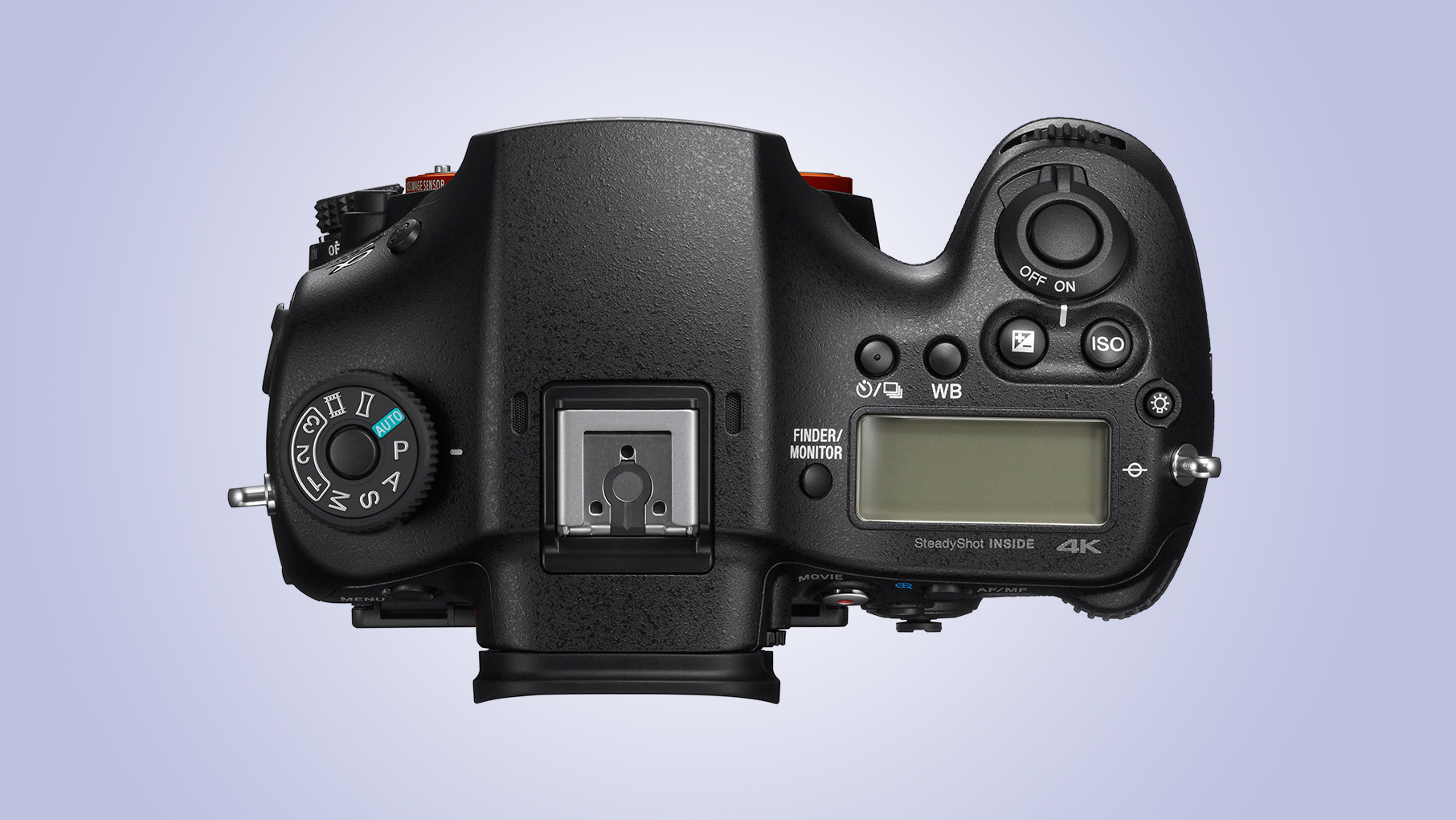
Unsurprisingly for Sony the camera has been primed with a whole suite of connectivity options, with Wi-Fi, NFC and Bluetooth joining USB and HDMI micro ports on the camera’s side. All images and videos are sent to the user’s choice of SD, SDHC and SDXC media, with support for the UHS-I standard, although Sony’s Memory Stick Pro format can also be used in one of the camera’s two card slots.
Battery life is rated at around 390 images when using the viewfinder, and around 490 frames when using the rear LCD, and Sony reckons you should be able to record around 135 minutes of video when shooting continuously.
Build and handling
- Magnesium alloy body
- Dust- and moisture-resistant design
- Anti-dust sensor protection
The original A99 was a camera that handled very well, with its physical controls logically arranged, clearly marked and pressing well into the body. The new model is said to be around 8% smaller than its predecessor, but given that little else has physically changed between the two, it’s great to find that the A99 II offers much the same positive experience.
Thanks to the arrangement of the controls and the depth of the body itself, the camera sits very comfortably in the hand. This is further helped by the gentle contouring of the grip and the ample room around the rear for the thumb rest. While the camera doesn't have the kind of backlit controls we’re starting to see on models like Nikon’s D500 and D5, the placement of convex buttons next to concave ones goes some way to helping you remember what’s what when using the camera in darker conditions.

The top plate LCD screen is slightly smaller than those on the likes of the Nikon D810 and Canon EOS 5D Mark IV, but the upside here is that this leaves enough breathing space for the controls around it. On the other side of the top plate, the mode dial is tall enough to be gripped comfortably, and its central locking button presses in easily enough to make releasing and turning the dial comfortable – considerably more so than on certain other cameras.
The joystick-type controller on the rear handles menu navigation, focus point selection and image browsing among other things, and for the most part this works very well. It tilts freely to whichever direction you move it, and holding it down allows you to move at speed, be it to shift the focusing point to the other side of the array or zip through a collection of images or menu screens. Given that this is such a key control, those with larger hands may expect something a little larger here, but its size does at least allow for surrounding buttons to be generously proportioned.
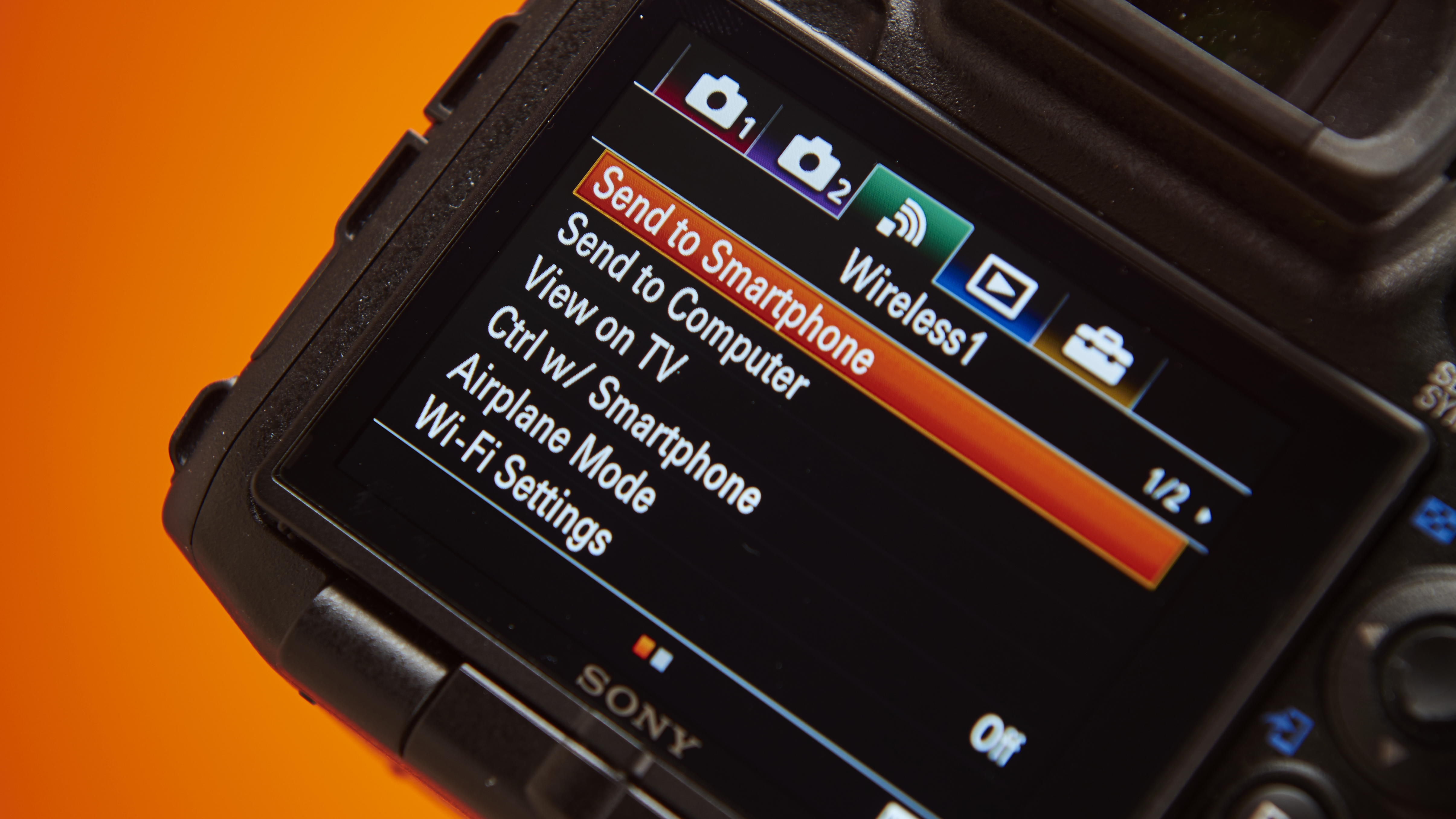
One thing Sony has revised for the new model is the shutter mechanism. This is now rated to over 300k actuations, which places it at the same level as many other professional DSLRs. Meanwhile, the self-cleaning sensor mechanism, which tends to work discreetly on many other cameras, vibrates the camera with surprising force on the A99 II. It appears capable of shaking away looser particles, although we still found it necessary to manually intervene during the course of this review by lifting the mirror and using a blower to deal with a few more stubborn ones.
Autofocus
- 4D Focus system
- Hybrid Phase Detection AF system (399 + 72 points)
- -4EV working range
Sony has chosen to include its previously seen 4D Focus technology in the A99 II. Although this has featured inside a number of both mirrored and mirrorless Sony models, this is the first time we’ve seen the system inside a full-frame option from the company.
The camera combines 399 phase-detect points on the main imaging sensor with 79 phase-detect cross-type points on a dedicated AF sensor. This forms a hybrid system, which sees the 79 points working in tandem with those on the main imaging sensor at the same time for superior focusing performance.
From the full array you can call on one of 323 points through the joystick control on the rear. For most purposes, having all 323 addressable points to hand is perhaps not necessary, and can slow you down, while another consequence of having such a saturated array is that most of the points are very small (the most central points are larger). Fortunately, Sony allows you to reduce the array of addressable points down to just 63 or 15, or alternatively to only the cross-type ones in the centre, enabling you to work faster.

For the most part, the A99 II is able to focus swiftly and precisely, particularly when you stick to the most sensitive proportion of the frame. That's not to say you can't find some success with the peripheral points, because you can – just that these are understandably less reliable in more testing conditions. One area where this is apparent is when set to track a moving subject; the central points work manically to keep the subject focused, but adherence isn't quite as strong elsewhere.
One thing that does impress is the camera’s ability to focus in poor lighting conditions. Sony rates the system as having a working range down to -4EV, which is strong for a model of this class. To give this some context, Nikon’s pricier D5 has a -4EV rating, but its Canon EOS-1D X Mark II rival only goes down to -3EV. It's both swift and accurate here when using the central points, understandably hesitating more when faced with a low-contrast subject but often eventually getting it right here too. One quirk is that, when faced with such scenes, the camera has an occasional tendency to take the image when the subject appears to be in focus, without it actually visibly or audibly notifying you that it has achieved this.
Performance
- 12fps burst shooting (with AF and AE)
- 4.5-step, 5-axis image stabilisation system
- 0.5in-type EVF, 2,36 million dots
The Sony A99 II's electronic viewfinder certainly makes an impression the first time you bring the camera up to your eye. With a magnification of 0.78x it fills as much of your view as possible without being difficult to view in its entirety, while the level of detail across the frame is high. It’s also excellent in low light, helping you to see darker scenes clearly, without too much noise obscuring details.
It’s not quite perfect, though. Minor artefacts appear over fine and linear details, while flat areas of no detail – skies, for example – can sometimes be rendered with very fine lines. Also, the relatively shallow eyecup allows you to get close to the finder, although its somewhat pointed design makes it a little less comfortable to use when shooting in portrait orientation, as it tends to dig into the area around your eye.
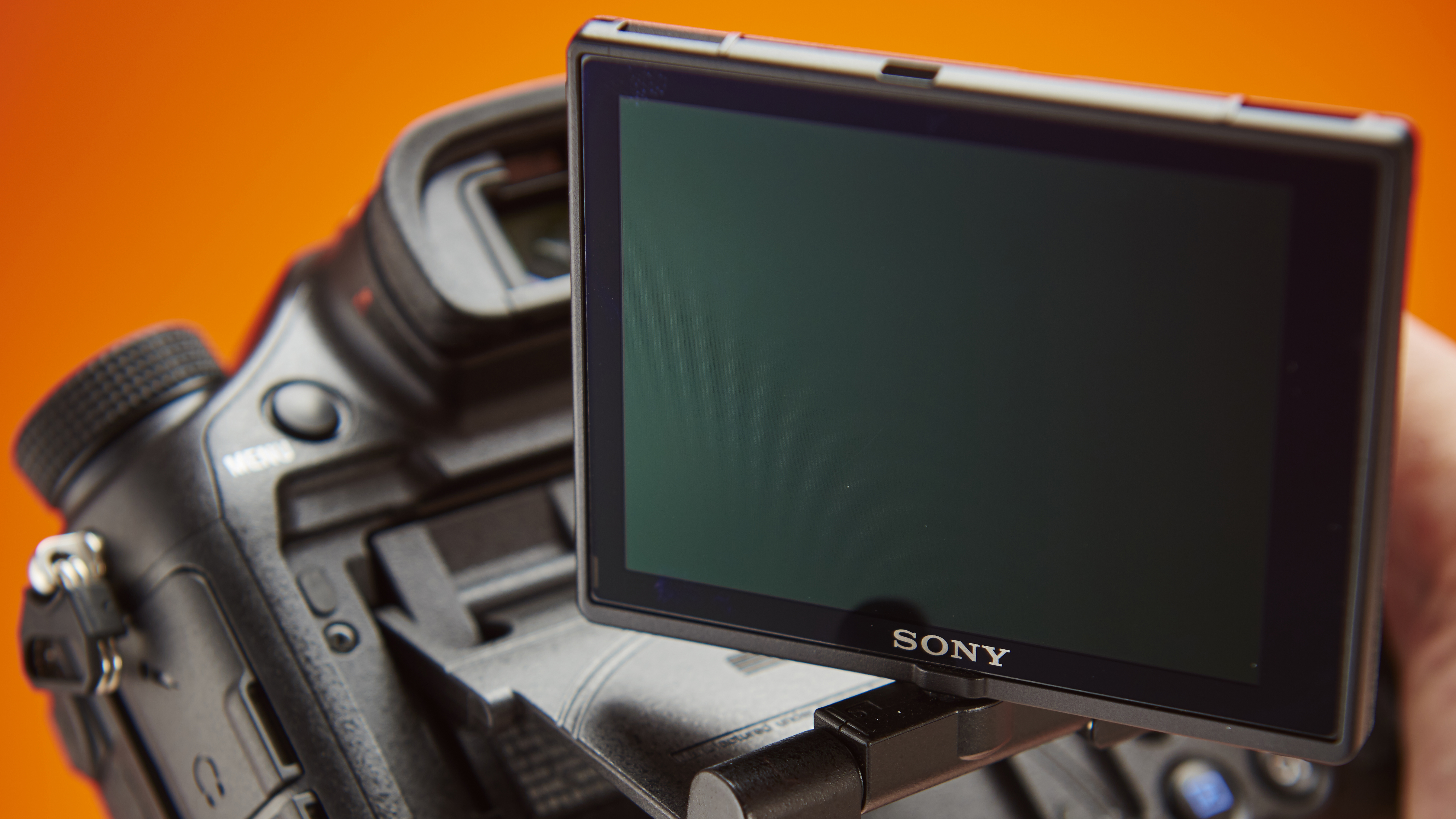
The 3-inch LCD screen on the rear of the Sony A99 II is slightly smaller than the 3.2-inch versions we’ve become used to on enthusiast- and professional-level models, and it fails to offer the touchscreen functionality we’re starting to see on many of its peers, but it makes up for this somewhat by allowing a particularly broad range of physical adjustments.
Its design allows you to tilt it to fully face forwards, so that it’s positioned either above the top plate or underneath the body itself, and you can also move it to face the side or have it almost parallel to the top plate. In addition, you can fold it to face the camera, which is great for protecting the surface from scratches, and something that’s lacking on other full-frame cameras with adjustable screens, such as Pentax’s K-1 and Nikon’s D750.
With 1.228 million dots it presents images with very good clarity, and zooming around magnified images with the joystick controller shows the camera to respond very well as you scrutinise details. When working outdoors it performs well in balanced conditions, although, as with many other models, it can become trickier to see clearly in brighter light. Fortunately, you can immediately improve things by selecting the Sunny Weather option in the menu system, although this does come at the expense of battery life.
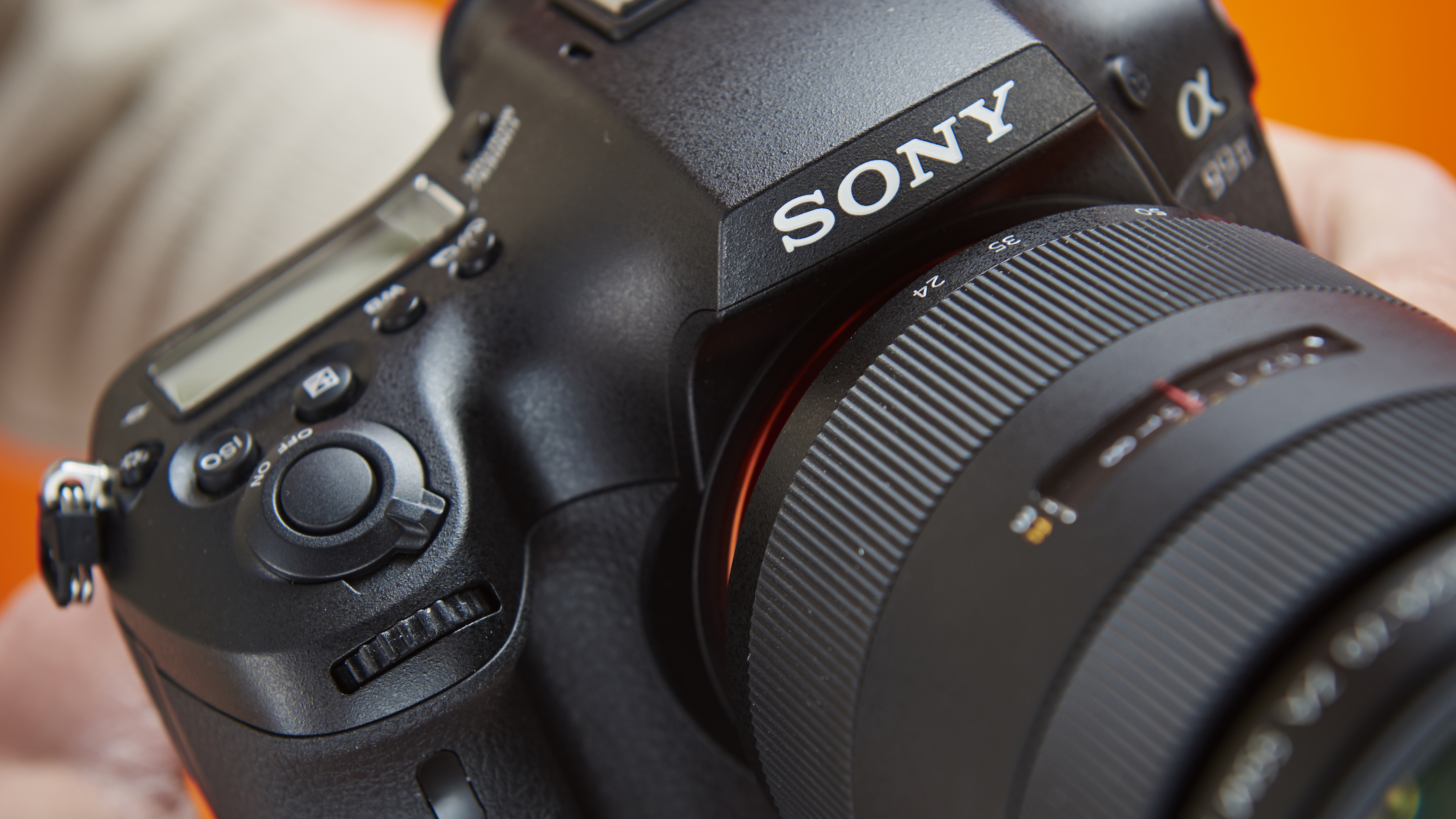
Provided you’re using a very fast card, the Sony A99 II is not only able to maintain a healthy burst depth, but also to send these images out to the card in very good time. Set to capture raw and JPEG images at the camera’s full resolution, the A99 II manages to record around 59 images before slowing down, at both 12fps and 8fps, and this is written to the card in just under 50 seconds. Further burst shooting while this happens is also possible, and, should you be playing back images as they're still being written to the card, the camera will indicate how many are still to be written, which is far more helpful than simply showing its status light, as the majority of other cameras tend to.
While the camera responds very promptly to changes in menu navigation, it sadly carries over one of the issues noticed in the original A99, namely a slight lag on the top-plate LCD when adjusting exposure settings. A quick turn of the command dial is followed by a very brief pause before the exposure value is actually changed here, although if you use the LCD or viewfinder you’ll find it displayed with less delay.
The camera also takes a little longer to fully come to life than some of its rivals, with shooting typically possible but shooting information only displayed in the viewfinder or top plate LCD after a slight delay. For most applications this may not be an issue, but on such a pro-grade camera we'd expect it to match the immediacy of its rivals.
Image quality
- ISO100-25,600 (exp to ISO50 and 102,400 equivalents)
- No anti-aliasing filter
- Picture Profiles for video recording
In addition to supplying other manufacturers with its own sensors, Sony has done a impressive job of furnishing its own models with some very capable ones, at a range of pixel counts.
The A99 II employs a sensor that appears similar to the one inside the A7R II, and it appears to be just as well-rounded a performer. One particularly impressive characteristic is its dynamic range. Images that are grossly underexposed at ISO100, typically by 3-4EV stops, can be brought back to life in post-production, with only a faint trace of noise in shadow areas to deal with. This is great, as it gives you plenty of latitude when faced with scenes with a particularly broad dynamic range, where you may want to underexpose to preserve highlights.

Noise control in general is also commendable. Indoors, images captured at around ISO6400 show a very fine patterning that can be quickly dealt with in post-processing, and if you’re happy to stick to ISO3200 and under you’ll be rewarded with even more natural-looking results. No doubt the lack of an anti-aliasing filter is partly what helps images to retain their details as well as they do here.

The A99 II’s metering system typically strikes the right balance with regard to its exposures, although there does appear to be a very slight tendency towards underexposure at times. Often, its behaviour here makes sense, as the camera is attempting to preserve highlights, although at other times the histogram shows it could have exposed a little brighter without sacrificing any details.
Fortunately, Sony has provided five separate metering modes to help you better tailor your camera to the specific scene at hand, including 'Entire screen average' and Highlight options that didn't feature on the A99, while the exposure compensation control falls easily to the finger too. It’s also a good idea to enable the Dynamic Range Optmizer for everyday shooting, as this can instantly lift shadowy areas for more pleasing results.

For a full-frame camera that offers a great deal of control over video recording, it comes as little surprise to find the A99 II to be as capable as it is. Footage is richly detailed, and motion is depicted without any obvious artefacts, while noise isn't entirely absent but is very well controlled. Audio is also recorded faithfully, and the Silent Multi Control on the front of the camera does exactly as promised, with its operation not picked up by the camera’s microphones during recording (assuming it has been de-clicked first).

The only strike against the Sony A99 II is that, like so many other cameras that lack an optical low-pass filter, footage of certain subjects is prone to aliasing artefacts. While you’re unlikely to see these in most everyday scenes, as soon as you have some distant buildings or something similar in the scene this can be apparent. If you don’t include such details in your compositions, however, you’ll be rewarded with strong results.
One omission, which isn’t critical but is still disappointing, is in-camera raw processing. This is currently being offered widely across models of all levels, and it makes light work of quickly polishing your images for immediate use, but for some reason it’s not something Sony has chosen to embrace here.
Verdict
Given the four-year gap between the Sony A99 II and its predecessor, it’s no surprise to see the A99 II as a significantly stronger camera. While many core features have, in some way, been upgraded – a higher-resolution sensor, more capable autofocus system, better video specs and upgraded viewfinder to name just a handful – it’s welcome to find Sony paying attention to smaller details, such as the Silent Multi Control dial.
Thanks to the new imaging pipeline, image quality is strong. Having a high-resolution sensor that’s capable of low noise and wide dynamic range at the camera’s heart is the A99 II’s greatest asset, while video quality is also very good, and helped with a range of supporting features. And yet, at the same time the camera maintains much of what we loved about the A99, with excellent handing and the benefits of the SLT system presenting very real advantages over more traditional DSLRs.
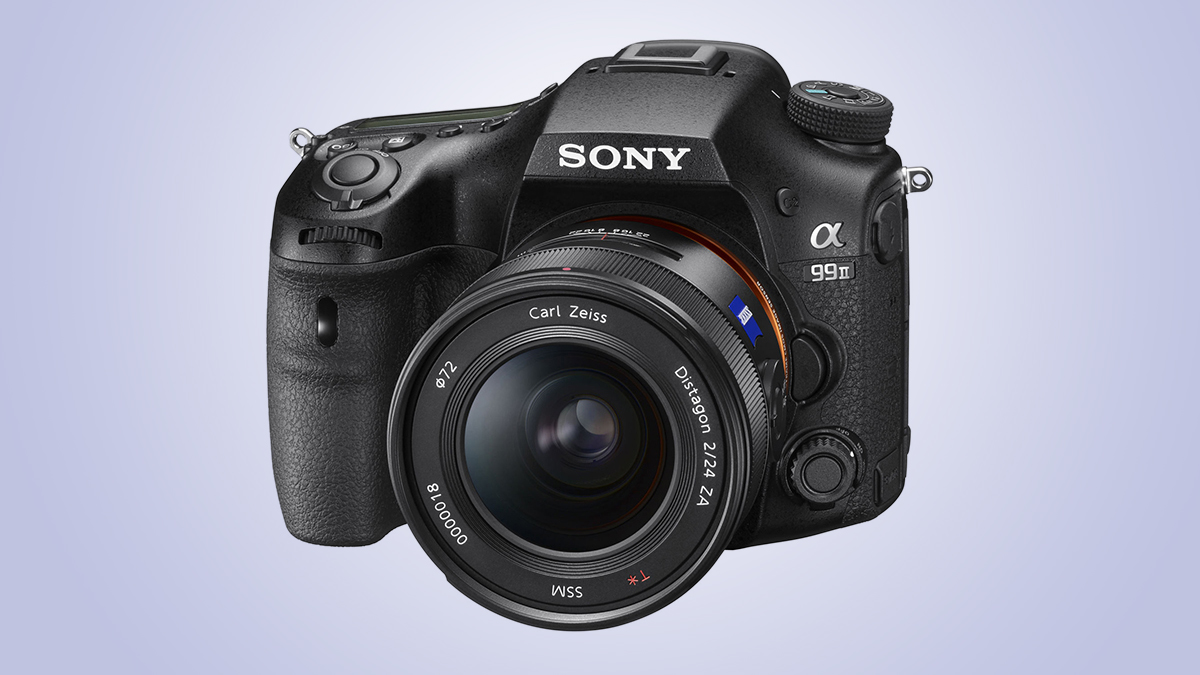
Naturally, there's scope for improvement. The AF system is strong but not quite flawless, while the slight sluggishness here and there also lets the camera down. The camera certainly delivers a lot for its asking price, but the fact that it lacks a touchscreen and in-camera raw processing is a pity.
Overall, though, Sony has very much got things right with the A99 II. The company’s A7 line, together with Pentax’s entry into the full-frame market and the arrival of a couple of medium format options, may mean this camera enters a very different market from the one the A99 was launched into, but with a unique blend of features and commendable performance, it can still very much hold its own.
Competition
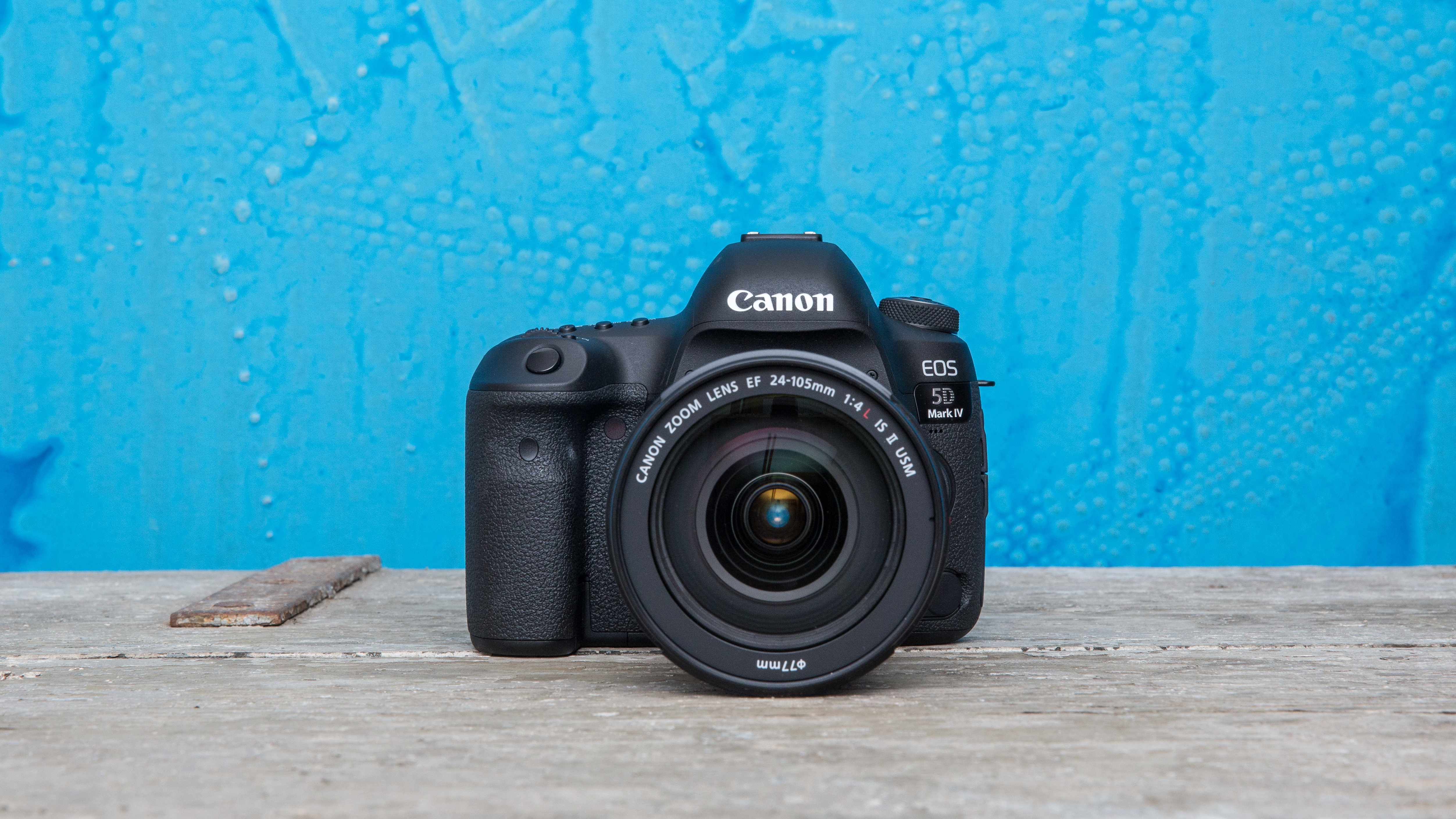
Canon EOS 5D Mark IV
Perhaps the closest competitor to the Sony A99 II in terms of specs and intentions, the EOS 5D Mark IV has a slightly lower pixel count of 30.4MP, and its 7fps burst rate isn’t quite as impressive as the Alpha A99 II’s 12fps, while its 4K video mode requires a crop to the centre of the frame. It also has a fixed LCD screen, although its battery life is roughly double that of the A99 II’s, while the touchscreen makes subject selection and focus pulling easier. There's also a GPS system on board, something lacking in the A99 II (though possible through connection to a smart device).
Read the full review: Canon EOS 5D Mark IV
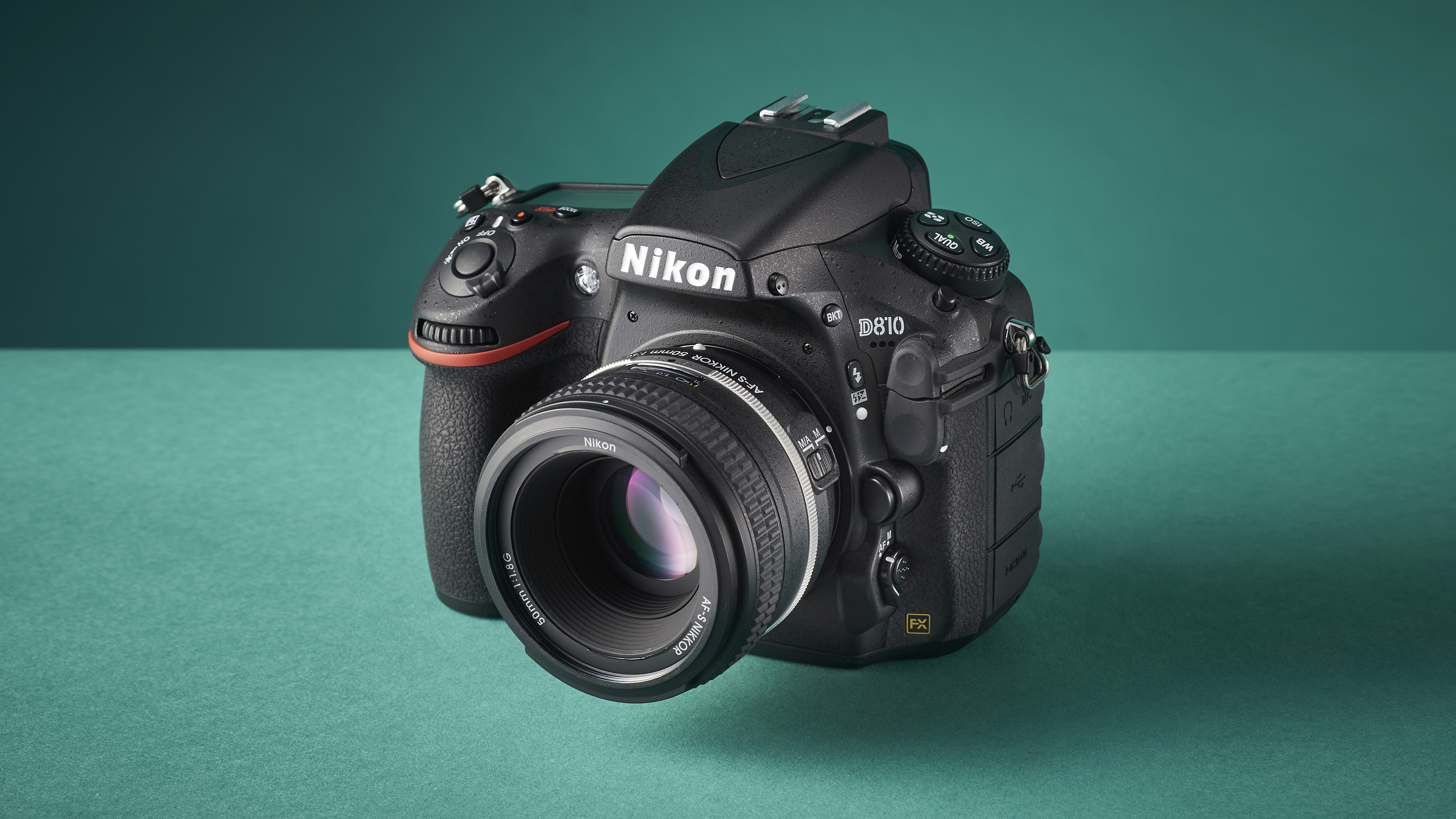
Nikon D810
The D810 is significantly older and much cheaper than the Sony A99 II, but it’s aimed towards a similar kind of user. With its 36.3MP sensor the D810 isn't far off the A99 II for pixel count, and its robust, weather-resistant body makes it suitable for the same kinds of testing environments as the A99 II. Its AF system is certainly competent enough for both static and moving subjects, although its 5fps burst rate (7fps at a DX crop) may make it appeal less to those wanting a tool for action, while the lack of 4K video recording also shows the camera’s age somewhat.
Read the full review: Nikon D810
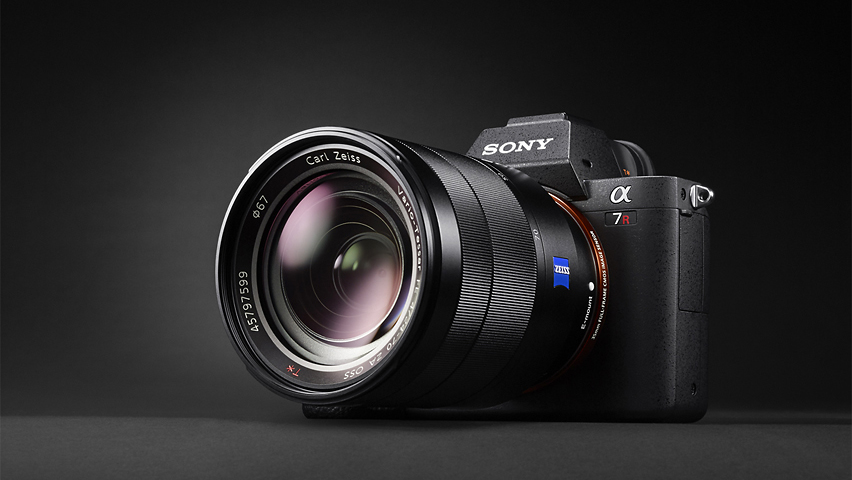
Sony Alpha A7R II
The A7R II bears a strikingly similar spec sheet to the A99 II, and is currently priced the same too, although there are differences. The A7R II has a lighter and more compact body, and while its 300-shot battery-life is significantly lower than the A99 II’s, it does come with two batteries as standard. The tilting LCD screen can't quite be tilted and adjusted to all the same positions as the A99 II’s, however, and it also misses out on a top-plate LCD. The A99 II is compatible with a broader range of native lenses, although the shorter flange back distance of the A7R II’s mount means it will work with many lenses from other mounts via an adapter.
Read the full review: Sony Alpha A7R II